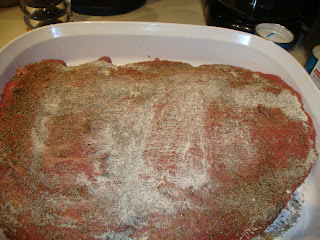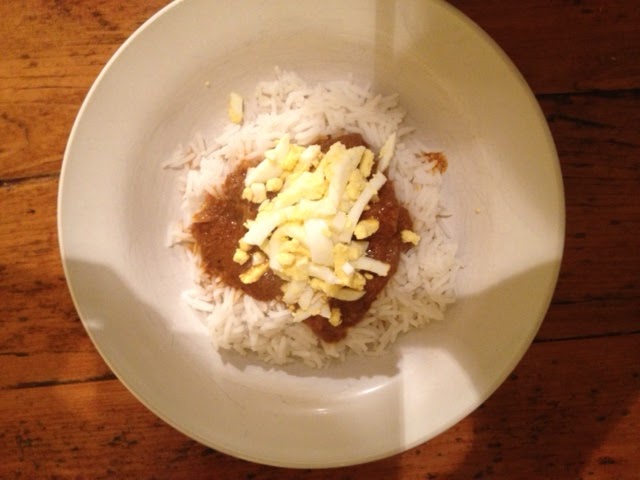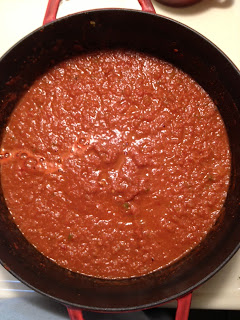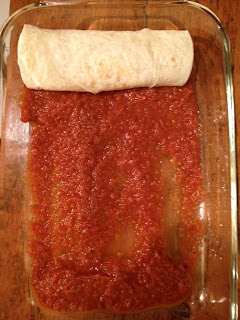By Tarquin Hall
I came came across this light-hearted murder mystery by chance when I was at the book store a few weeks back. Not only did the title, "The Case of the Deadly Butter Chicken", catch my eye for obvious reasons, but so did the endorsement by Alexander McCall Smith, being "These books are little gems. They are beautifully written, amusing, and intensely readable". Considering how much I love ready McCall Smith's books, this was all the convincing I needed to put this title in my basket.
This is Tarquin Hall's third installment of the Vish Puri mystery series. I do admit that I have not read the first two books, but frankly, they don't have food in the title!!!! I'll get to them at some point, I'm sure. (I think I must after reading this incredibly fun book...Vish Puri may be my new hero). Vish Puri (a.k.a. Puri, a.k.a. Chubby), India's Most Private Investigator, is a former military man turned private detective, who is in constant battle with his love of food and the number on his bathroom scale. Who isn't?! His adventure begins with a case of a stolen mustache...you read that right...a mustache mystery. This plays close to Puri's heart as he prides himself in having a magnificent mustache of his own. Although this is a very odd mystery, with the victim traumatized that his thirteen foot leviathan has been stolen from quite literally under his nose, the main mystery is when the father of a renowned cricketeer takes a bite of butter chicken at a cricket gala and dies before the guests' eyes. Puri is on the case! His quest to solve the murder takes him into the underworld of cricket betting, to reunite with old friends and as far away as Pakistan, a place he as hated and feared all his life. Since he is India's Most Private Detective, he certainly solves his case, but not without the help of Tubelight, Face Cream, Chanel No. 5 and his beloved Mummy-ji.
Well as you can imagine, this was the perfect reason for me to try making butter chicken from scratch. You all know that I hadn't made a curry from scratch up until a few weeks ago when I made a vindaloo, so I might as well try to make a butter chicken, also known as Murgh Makhani from scratch too. Butter chicken needs very little introduction. This rich, buttery, creamy dish is likely the most well known of all Indian dishes, served in restaurants and homes alike. It is said to have originated in a restaurant called Moti Mahal in Delhi, India before the partition of British India.
Butter chicken is not the same as the popular chicken tikka masala...the two dishes look similar and use grilled chicken in the sauce, but the base of each recipe is quite different. Butter chicken is made with pureed tomatoes, spices cooked in butter and finished with fresh cream. The trick is to cook the chicken in a tandoor (a traditional clay oven) where the temperature is much higher than in a regular oven. There have been many attempts to make the perfect butter chicken, but be wary of those recipes using oil as a substitute for butter...it is never as good or satisfying. If you must substitute the cream, then use half and half or evaporated milk so that the dish stays close to the true taste.
Ingredients:
- 2 lbs chicken (washed, patted dry and cut into small pieces - use chicken with or without bones, thighs or a combination of breasts and thighs)
- 1 teaspoon red chili powder
- 1 tablespoon lemon juice
- salt
- butter/ghee*
*Ghee is a class of clarified butter that originated in South Asia and is commonly used in South Asian (Indian, Bangladeshi, Nepali, Sri Lanken and Pakistani) cuisine. The word Ghee comes from Sanskrit and has several names around the world. Ghee is made by boiling butter and removing the residue. It is different from clarified butter in that the production of ghee includes simmering the butter along with milk solids so that they caramelize and make it nutty-tasting and aromatic. Spices can be added for flavour. Ghee has a long shelf life and needs no refrigeration if kept in an air-tight container to prevent oxidation. The texture, colour and taste of ghee depends on the quality of the butter and the duration of the boiling. It can be found in the ethnic areas of most major supermarkets. (I used regular butter in the below recipe.)
For marinade:
- 3/4 cup plain yogurt, strained, hung or use 1/2 cup Greek yogurt
- 1.5 teaspoons kasuri methi/dried fenugreek leaves
- 1/2 - 1 teaspoon turmeric
- 1 teaspoon gram masala
- 1.5 tablespoons mustard oil (or any other cooking oil substitute)
- 1.5 tablespoon ginger paste
- 1/2 tablespoon garlic paste
For sauce/Makani Masala
- 2.5 inch fresh ginger (made into a paste)
- 8-10 cloves of garlic (made into a paste)
- 2-4 fresh green chili pepper (slit)
- 4 tablespoons melted butter
- 4 green cardamoms
- 1.5 to 2.5 inch cinnamon stick
- 3 cloves
- 1 black cardamom
- 1 teaspoon methi/fenugreek seeds
- 3-3.5 cups tomato puree
- 1 tablespoon red chili powder/cayenne/paprika or to taste
- 10 almonds (soaked, peeled and made into a paste) **I omitted this as there is a nut allergy in my family
- 1 teaspoon gram masala
- 2 teaspoons kasuri methi/dried fenugreek leaves (crushed)
- 1/2 tablespoon sugar
- 1/2 cup + 2 tablespoons heavy cream
Preparation:
Apply red chili powder, lemon juice, and salt to the chicken and set aside for 20 minutes. This is the first marinade.
Combine all the ingredients of the second marinade. Apply this marinade to the chicken and refrigerate for three to four hours, overnight works even better.
Put the chicken on skewers and cook on a grill or in a preheated oven at 400 degrees for about 10 minutes. Turn midway. Cook until done. Do not overcook, as the chicken will dry out and get fibrous. Baste it with butter/ghee/oil a couple of times while cooking.
Heat the butter/ghee/oil in a thick bottom pan. Add green cardamom, cloves and cinnamon. Sauté for a couple of minutes or until they start to sizzle and get fragrant; add the methi/fenugreek seeds. When the methi seeds sizzle, add the ginger and garlic pastes and the slit green chilies. Cook for five to eight minutes; the water from the paste would have evaporated and the ginger paste would have reduced in quantity.
Add tomato puree, red chili powder, and salt. Cook at medium heat for about 15-20 minutes. The puree will reduce to a thick paste and the oil/ghee will separate from the sides of the pan.
Add 2.5 cups of hot water to the pan, add the almond paste and bring to a boil. Reduce heat and simmer for about 15 minutes; add sugar and crushed methi.
Add cooked grilled chicken pieces. Stir well to combine - the chicken will be well coated with the sauce. Cover and simmer for eight to ten minutes. Lower the heat and add garam masala and the heavy cream. Stir in the cream and simmer at low heat for about five more minutes.
Garnish with fresh cilantro and add a splash of cream before serving.
Serve hot with rice pulao and/or naan.
बॉन एपेतीत
bŏna ēpētīta




































